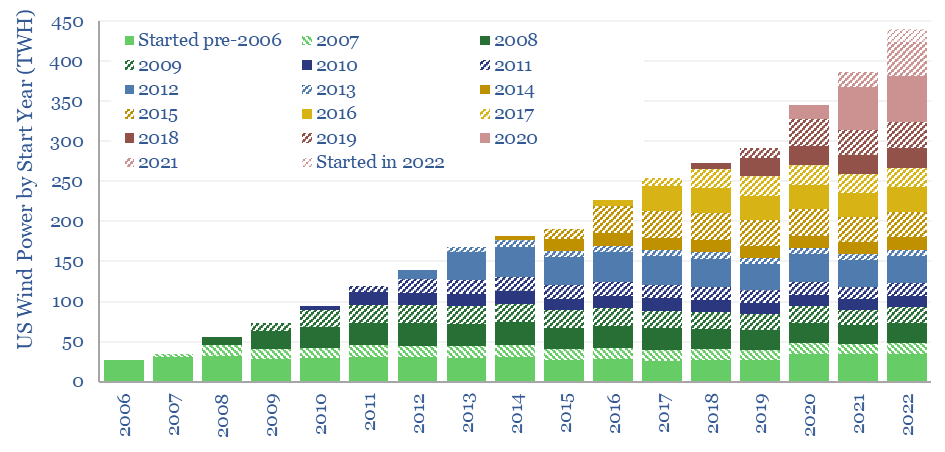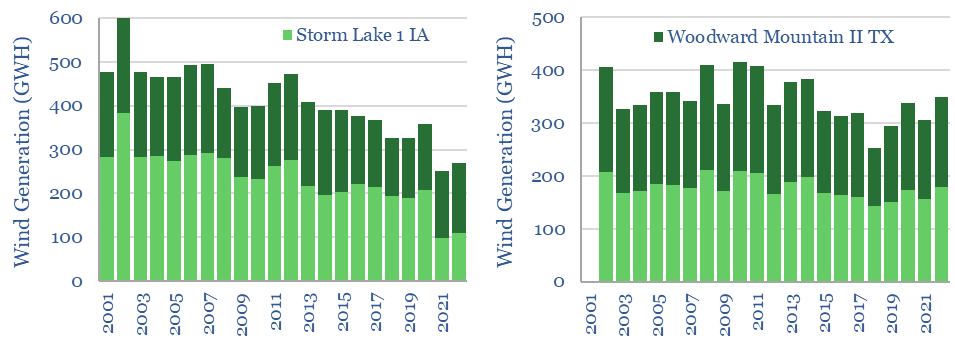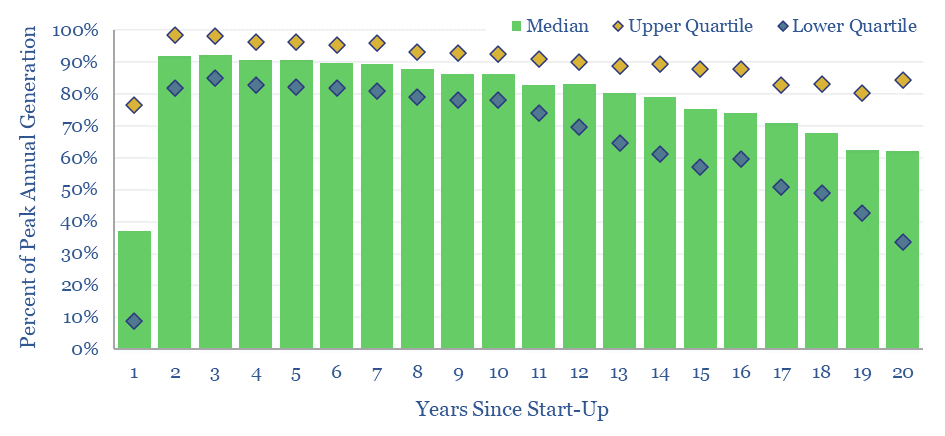This data-file aggregates wind generation by facility, across the US, at 1,400 wind farms, going back 20-years. Wind power decline rates average 1% per year, then possibly accelerate to 3-4% per year in years 10-20. However wind generation is also noisy, typically varying +/- 7% YoY. This matters for the economics and ultimate share of wind.
This data-file aggregates US wind generation by facility, across 1,400 wind farms to-date, going back 20-years. It is based on publicly available generation data from the EIA, which simply requires a couple of days of aggregation, cleaning and analysis.

Hence this data-file gives a full breakdown on US wind generation by facility, so you can stress test assumptions. We also discuss variables that may lower future decline rates.
Across the entire data-set, we find wind farms take two years to ramp up. Generation peaks in year 3. It declines at 1.0% per year up to year ten (when production tax credits tend to roll off, for plants constructed historically in the US), then decline at 3-4% from year 10 to 20.
However, the data are highly variable, as shown by the examples plotted below. Volatility does matter for the costs of integrating renewables, the ultimate share of renewables and the effective CO2 abatement costs of renewables.

Decline rates matter for the economics of wind power, and feature in our levelized cost calculations for the costs of onshore wind and the costs of offshore wind projects.
Decline rates also matter for the ultimate share of wind in the future energy mix, as our forecasts see wind ramping up by 5x to supply 10,000 TWh pa of useful energy by 2050. However, a 1-4% decline rate would mean that 50-200GW pa of new wind additions would be required simply to offset the decline of previously installed facilities.
The ‘Conclusions’ tab explores the consequences. Underlying data on each individual wind facility, plus statistical distributions into their YoY performance, are calculated in the AllWindPlants tab.

